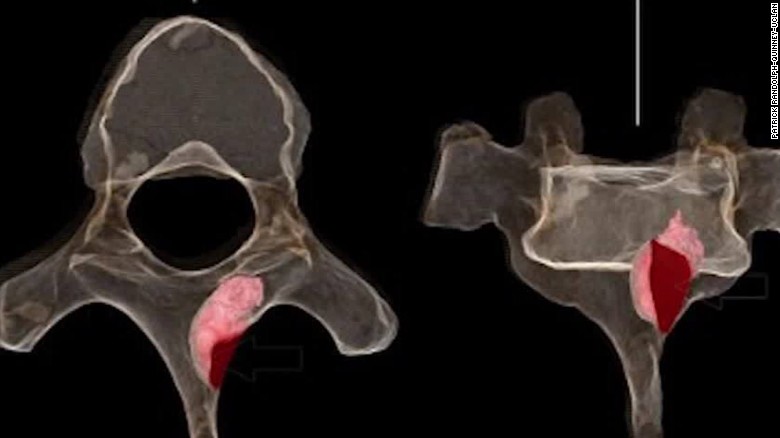Cancer has been observed in humans and other animals throughout recorded history. So it’s no surprise that people have been writing about cancer since the beginning of time. Some of the earliest evidence of cancer can be found in fossilized bone tumors, ancient Egyptian human mummies, and ancient manuscripts. But did you know where scientists found the first cancer cell?
Cancer was discovered in a 1.7 million-year-old foot bone and a two million-year-old spine from two ancient hominin specimens found in South Africa by scientists. Before these discoveries, the oldest cancer in a human was only 120,000 years old.
Where Did the Word “Cancer” Come From?
The Greek physician Hippocrates, known as the Father of Medicine, is credited with coining the term cancer. Hippocrates used the terms carcinos and carcinoma to describe non-ulcer forming and ulcer-forming tumors. These words in Greek referred to a crab and were most likely applied to the disease because cancer’s finger-like spreading projections resembled the shape of a crab. (Source: Cancer)
How Did Cancer Affect and Influence Ancient Medicine?
Scientists understood the human body better during the Renaissance, which began in the 15th century. Scientists such as Galileo and Newton pioneered the scientific method, which was later applied to disease research. Harvey’s autopsies led to an understanding of blood circulation through the heart and body, which had previously been a mystery.
In 1761, Giovanni Morgagni of Padua was the first to perform autopsies to correlate the patient’s illness with pathologic findings after death. This paved the way for scientific oncology or the study of cancer.
The famous Scottish surgeon, John Hunter, proposed that surgery could cure some cancers and described how the surgeon would decide which cancers to operate on. There is no impropriety in removing it.
After a century, the development of anesthesia enabled surgery to flourish, and classic cancer operations such as the radical mastectomy were developed. (Source: Cancer)
Cancer in the 19th Century
With the use of the modern microscope in studying diseased tissues, the nineteenth century saw the birth of scientific oncology. Rudolf Virchow, known as the Father of Cellular Pathology, established the scientific foundation for modern cancer pathology. Virchow linked microscopic pathology to illness in the same way that Morgagni had linked autopsy findings with the unaided eye to the clinical course of illness.
This method not only allowed a better understanding of the damage cancer had done but also aided the development of cancer surgery. Body tissues removed by the surgeon could now be examined and a precise diagnosis could be made. The pathologist could also tell the surgeon whether the operation had completely removed cancer. (Source: Cancer)
